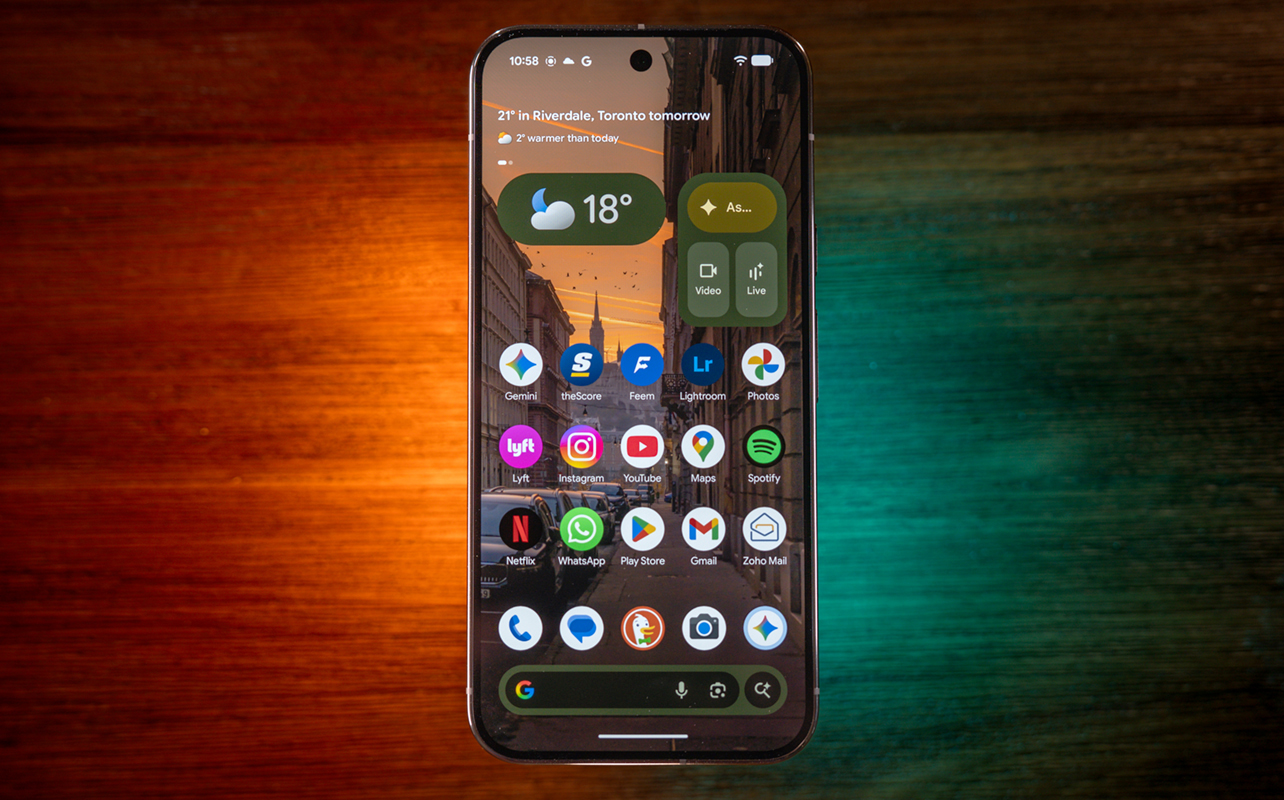
The Google Pixel 10 Pro XL looks a lot like its predecessor, making the bigger story here what it’s capable of when you use it. An AI-driven approach led by Google’s Gemini platform is at the centre of it all in an attempt to make the phone a more helpful tool.
This will be a work in progress as AI features so often tend to be when they continue to evolve. Some of what’s already available feels practical and user-friendly, though you have a choice on whether you even want to use them or not.
Watch the Google Pixel 10 Pro in action
Google Pixel 10 Pro XL (as tested):
|
Pixel 10 Pro XL design
I won’t go over too many design details having already covered them here. There are virtually no aesthetic updates from the previous Pixel 9 Pro XL to this one. That goes for the regular 10 Pro as well. Apart from a slightly heavier body, the same screen, build materials, and camera array all apply.
There are a few things that stand out, though. One is the fact Canadian variants of the Pixel 10 lineup have physical SIM card slots, whereas American ones don’t. That’s a first for the Pixel series, at least ensuring you’re not forced to use an eSIM if you don’t want to in Canada. Another is that the screen is brighter when viewing it outdoors. Note that these apply to all Pixel 10 models.
The biggest physical change is adding Pixelsnap, a built-in magnetic system that lets you attach chargers, stands, wallets, lights, and other accessories directly onto the device. It’s basically Google’s answer to Apple’s MagSafe, and works perfectly fine with MagSafe accessories, too. Google is also the first Android phone maker to actually integrate it into the phone itself, rather than doing it with cases, like Samsung and OnePlus do. All Pixel 10 cases made by Google will also be Pixelsnap-ready.
Personally, this is one of my favourite new features because it goes well beyond simple charging. A wallet with cards, lights for mobile photography or video, selfie sticks, and even mini-speakers can attach to the phone. There are so many cool accessories out there that can work with the phone, and it will be interesting to see how they enhance the Pixel experience.

Plenty of AI features
Google’s suite of AI features is the lynchpin of what you can consider “new” in this device (or the entire Pixel 10 line, for that matter). The good news is some of what’s available feels practical and useful, whereas others aren’t going to hit the same way right now. To break it all down, I’ll address them separately.
Magic Cue
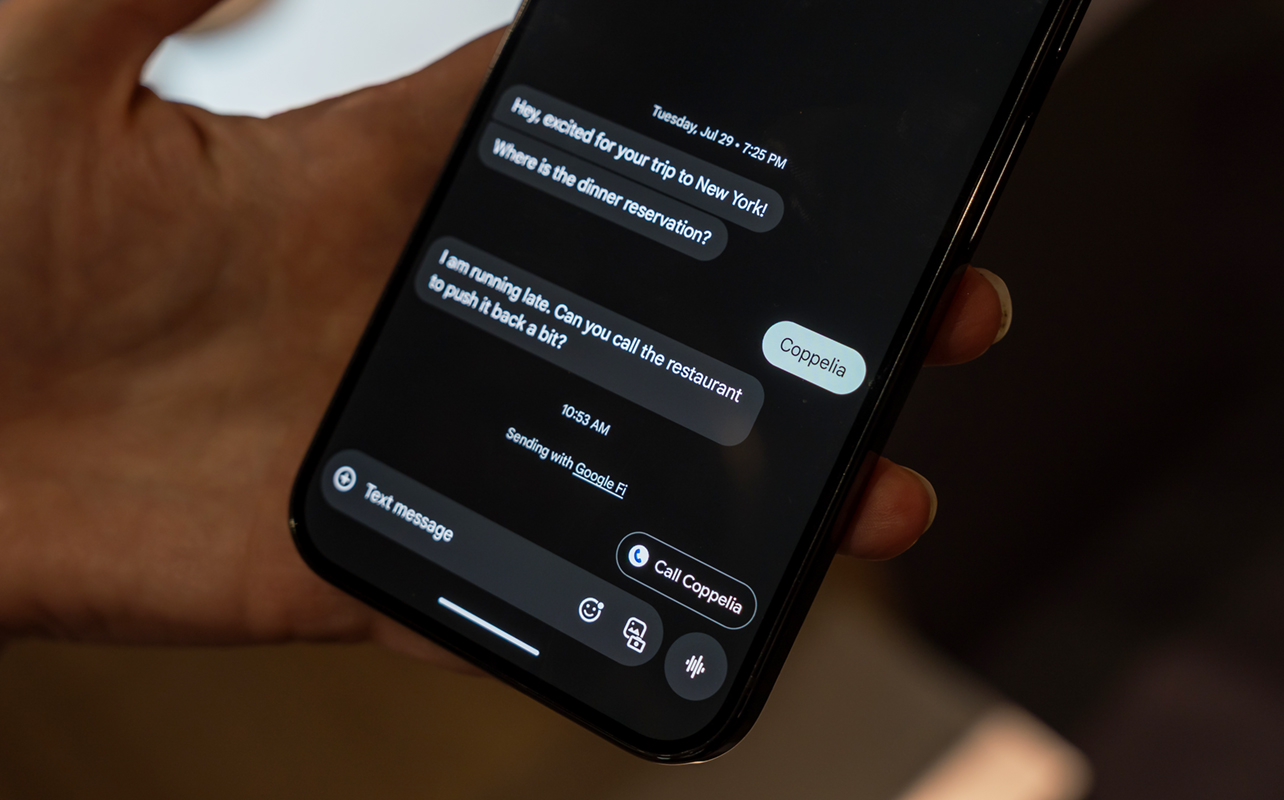
This one probably carries the biggest potential impact because it transcends apps and tasks. Magic Cue uses Gemini to add context and relevant information within conversations in Google Messages. One of the best examples in my testing was seeing flight reservations show up when texting myself from a different phone asking for them. Granted, the Pixel 10 Pro could only bring them in because the details were in my personal Gmail account. Workspace accounts aren’t compatible with this feature yet, limiting the effectiveness if you wanted to use this to stay organized at work.
When a restaurant comes up in conversation, the option to call for a reservation should appear. An OpenTable link might even pop up. If someone asks for someone else’s contact info, it can pull it in from your phone contacts.
I find it an interesting system-wide integration, though “wide” is a relative term because it doesn’t know third-party apps yet. The examples I’m citing here work because it’s one of Google’s apps communicating with another. Magic Cue wouldn’t appear if the same flight, restaurant, or contact info came up in WhatsApp, for instance. Not only that, but phrasing also trips it up. If I were to mention “that Thai restaurant on Richmond” or “text me when you land”, Magic Cue would stay silent. It needs keywords, like “flight”, “meeting”, and “reservation” to act—assuming it actually takes its cue.
This is something Google says will improve and expand in the months and years to come, so we’ll see. It’s a neat way to smoothly integrate AI features without feeling intrusive but it still needs a lot of polish.
Voice Translate
This one is compelling because it gives you real-time translation using your own voice. Imagine speaking to a relative where you each struggle with a language barrier. As of now, it translates English to Spanish, German, Japanese, Italian, French, Portuguese, Swedish, Russian, Indonesian, and Hindi. There are also a few languages that go the other way in translating to English as the primary speaker. One catch is that English (Canada) isn’t supported, so you have to pick either United States or United Kingdom to get around that when first turning the feature on in the Phone app. Make sure to do so when first setting up the phone because the voice package is about 2.4GB of data you need to download.
Let’s say the person you’re speaking to only speaks Spanish. While you speak normally in English, they hear Spanish. When they respond, you get the English translation. This kind of tech is available on other third-party devices and apps except retaining your voice is what makes it feel personal here.
Keep in mind that you need to tap Call Assist->Voice Translate->(spoken language) to activate it. Each side hears a voice noting translation is in effect and you just carry on the conversation from there.
I like that this works entirely on-device, meaning there’s no need for the cloud at all. That’s great for privacy but also for ensuring a level playing field for all users. This way, a spotty internet connection isn’t a factor when trying to use it.
Voice writing and edits for messages
You could dictate a message by voice on Google Messages for years now but AI integration makes it more personal, like telling it to edit the text in a number of ways. I can see this being useful in cases where you want to put some thought into a message or to avoid typos. For example, I told it to replace one word with another and to add punctuation, like an exclamation mark, after a particular word or sentence.
I should note this also works with messages you simply typed in, so you don’t have to voice every message to benefit from the feature. It’s pretty good, as is, and I suspect it will improve over time, particularly as it learns the words you prefer to use most.
What’s missing?
Not all AI features are available in Canada yet. Daily Hub, Take a Message, Ask Photos, and more extensive Magic Cue features are either U.S.-only or U.S. and a few other markets. Google has yet to confirm when they’ll roll out to Canada.
More AI with Gemini
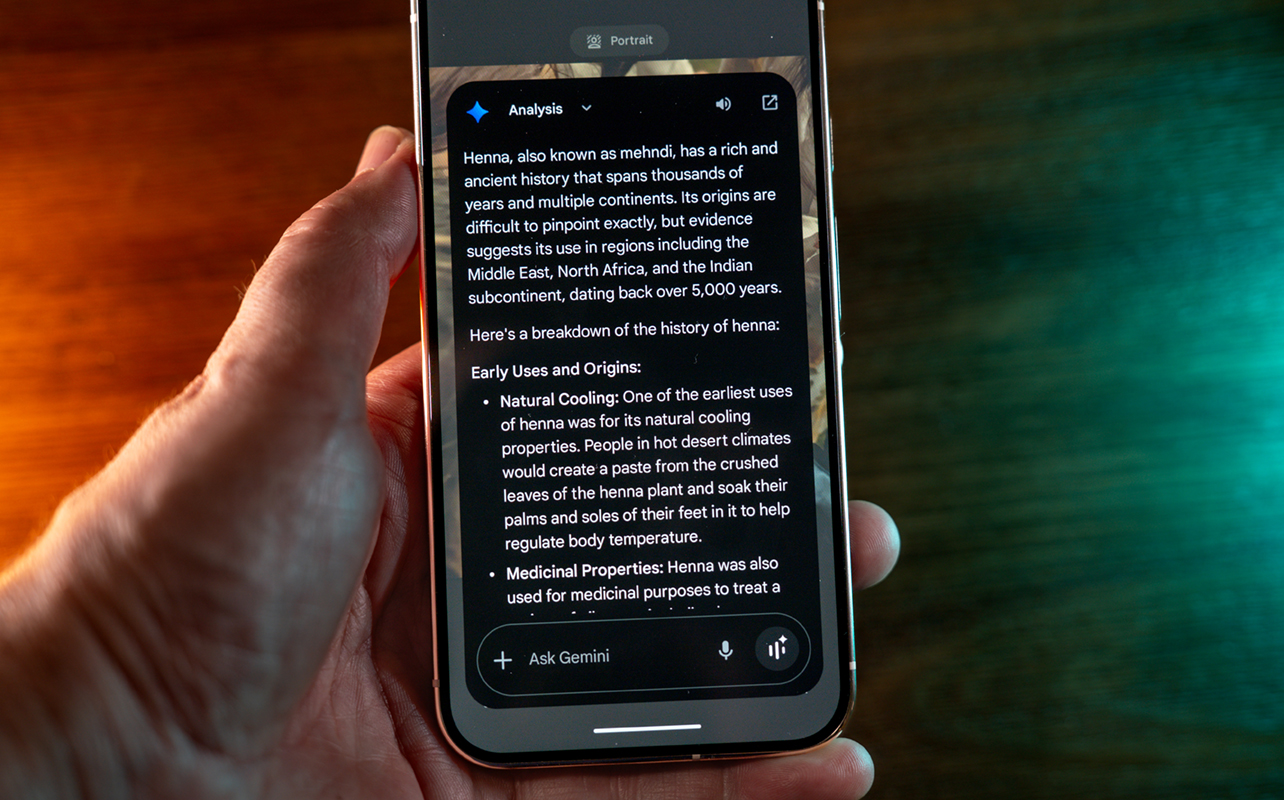
Gemini is Google’s AI platform capable of doing everything Google Assistant does and much more.
I previously touched on Gemini Live in my Samsung Galaxy Z Fold7 review, which works much the same way here. Hold down the power button with anything on your screen and you can choose to share it with Gemini Live. This acts like a phone call where you ask questions about what’s onscreen and Gemini responds. It doesn’t really matter what it is, either. You also don’t have to talk to Live. If you choose “Ask about screen” instead, you can type in your query for a more discreet exchange through messaging.
Whether it’s a screenshot, open app, or the live camera view, it contextualizes whatever you’re looking at or what you want to know. The voice sounds more conversational, making it feel a little more like a chat than an awkward back and forth based on prompts. I talked to it normally without really worrying about phrasing and it tried to do the same.
Live works in the cloud so you need a data or Wi-Fi connection to make it work, and my testing shows that spotty connections ruin the experience. A fair amount of data goes back and forth, so it’s necessary to utilize a stronger data or Wi-Fi connection. It offers an impressive level of knowledge but also makes mistakes, so it’s a mixed bag.
Gemini Pro subscription
Pixel 10 Pro XL owners (applicable to all Pixel 10 Pro models) are eligible for a 12-month free trial of Gemini Pro (version 2.5 as of this review), which adds deeper and smarter features. Veo 3 can create short 8-second AI -generated video clips based on whatever prompts you come up with.
The subscription also gives you access to Flow, a separate “AI-powered filmmaking tool” that combines a few AI models together to create cinematic clips based on your direction. You decide the “ingredients”: content, characters, settings, camera angles, and film style. It’s an interesting creative outlet, though I recommend you read through the privacy policy to understand what Google can see when you use it.
Deep Research is capable of digging into really big papers or hundreds of websites about a specific topic and producing relevant information you can reference. This expands to other uses, like asking about starting a particular business or what you need to know when it comes to registering for a certain licence, among other examples.
Performance and usability
There’s not as much to say about overall performance because it’s unremarkable. The Pixel 10 Pro XL never gave me reason to worry about day-to-day use. Google’s Tensor G5 processor may not win technical benchmarks, but I doubt you’ll ever notice or care as you use it. Android 16 is part of the reason why, as the marriage of hardware and software feels smooth here. The upgrade to 16GB of RAM helps, as does the general flexibility in customizing Android on the device. I just wouldn’t recommend it if you’re big into mobile gaming.
Camera quality
Google uses the exact same cameras as the Pixel 9 Pro models, so the only differences come from software computation. This can cut both ways because details stand out more, only the extra processing can sometimes work too hard. Pulling out the texture in a brick wall is cool, but I’m not sure that smoothing out the skin on a person’s arm is always necessary.









I suspect image quality won’t disappoint most people, especially because image processing delivers solid dynamic range. Bright daylight or night, the camera can give you something, though zooming can fall off a quality cliff as you keep going in. Portrait mode also gets a nice update for more effective results.
AI-driven camera features
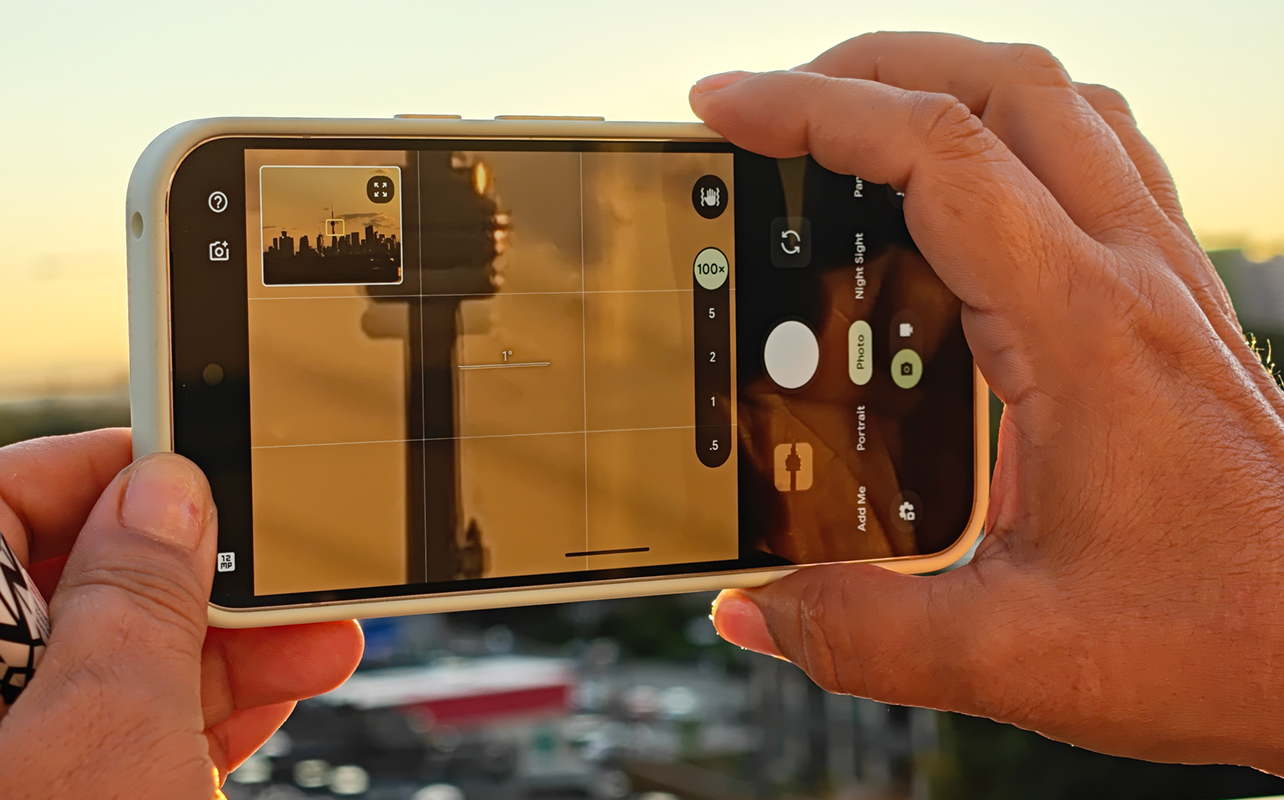
The bigger differences come in the AI-driven add-ons. Google touts 100x Super Res Zoom as a major upgrade but I would temper that boast. When you take a photo at 100x, the AI turns the pixilated mess into a more usable image. It’s cool to see it work and score a win here and there, but it might also ruin a shot. For example, it struggles with any sort of text. The reason why is because the AI is essentially trying to fill in what the camera can’t see clearly from that distance. Objects are easier, whereas people and text are far more difficult.
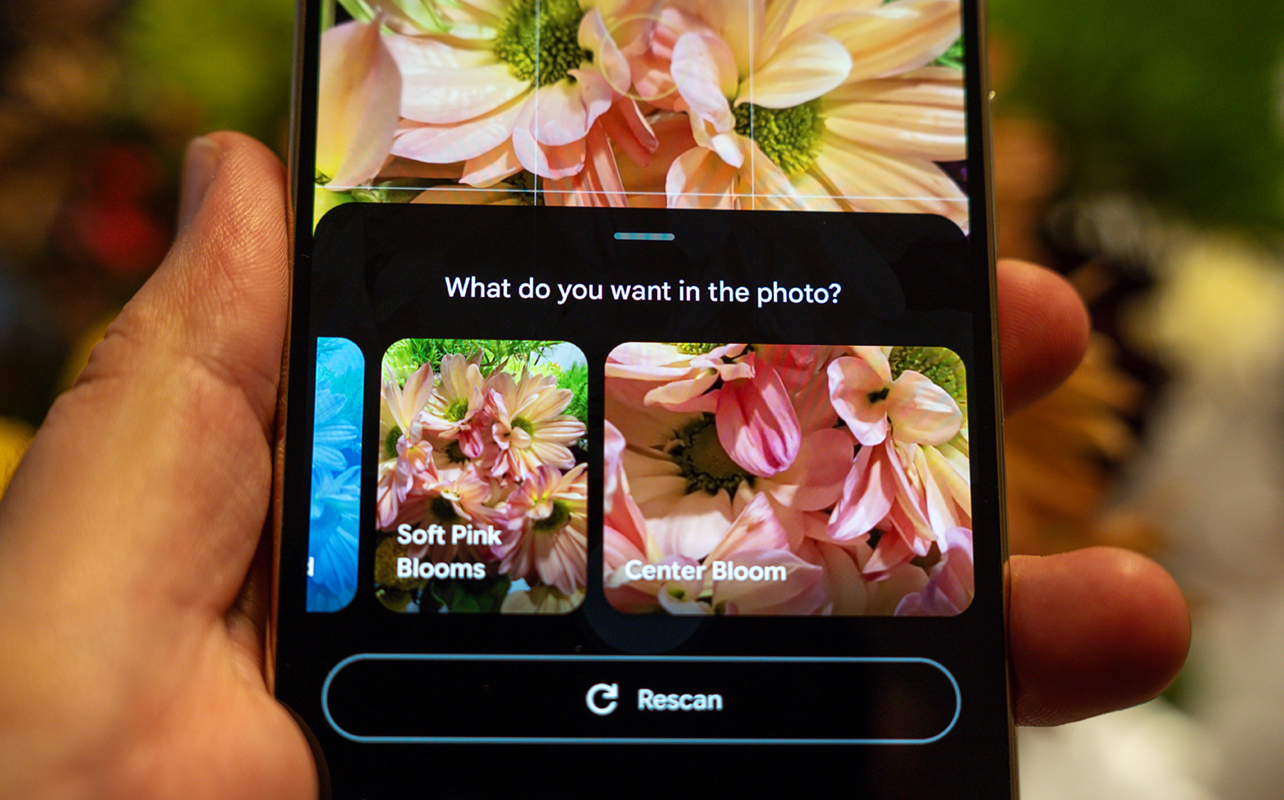
On the other hand, I can see Camera Coach becoming a hit. You need a data connection to use it but all you need to do is point at what you want to capture, tap the coaching button on the top right, and let it assess the scene. It’s not exactly instant but once it’s done, it presents you with options on how to compose the shot. Choose one and you get step-by-step instructions to capture the photo. As an experienced photographer who also shoots professionally, I grew to really like the feature as a means to make people better photographers on their phones.
I also like the “?” icon on the top right that leads to tips, examples, and how-to’s for using the various camera modes. Yet another way to educate Pixel users on what they can do for themselves rather than AI features doing it for them.
More AI photo editing features
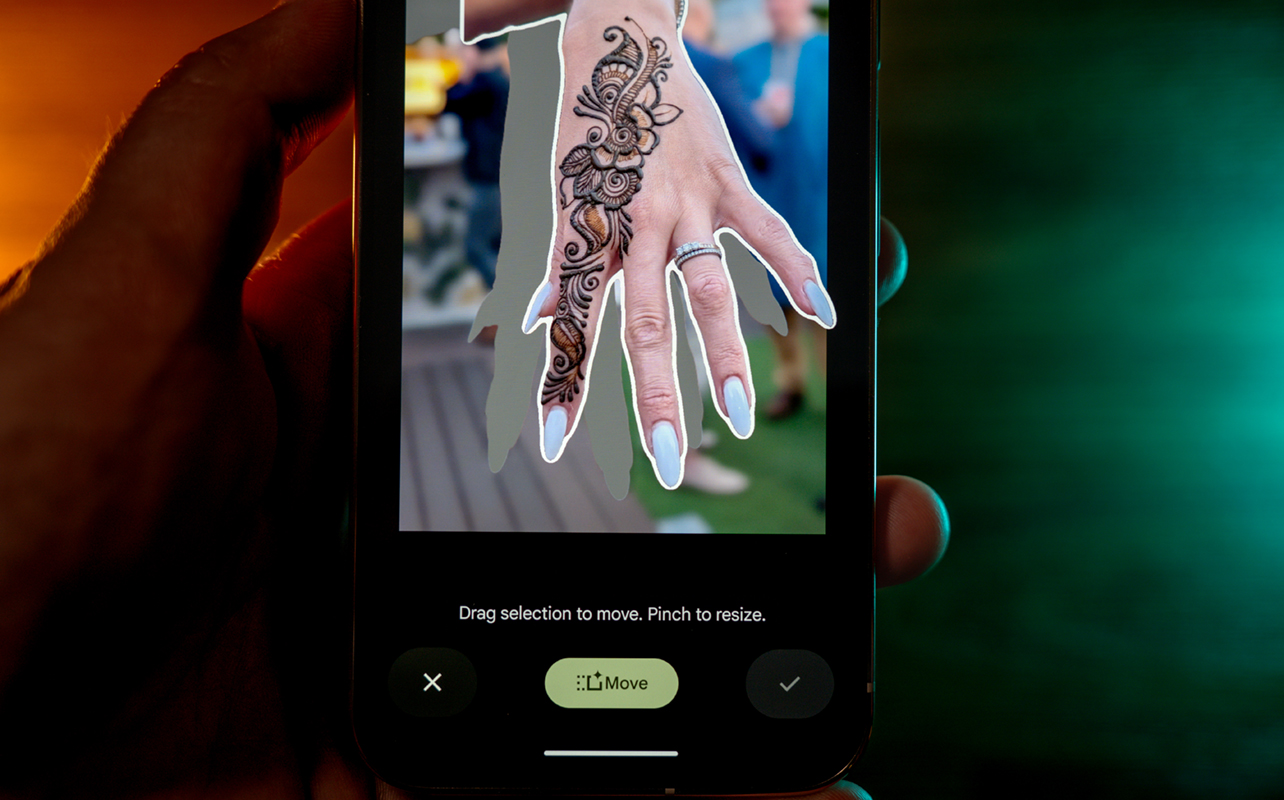
Google’s Magic Eraser still anchors the editing suite, now joined by others to try. Auto Best Take automates taking a photo of multiple people to ensure everyone’s best face is in the frame. It’s pretty cool, though requires patience because you have to wait for the ring to close around the shutter button, where the phone then takes another shot on its own. View the images in the gallery after and the AI will do its best to merge multiple photos or pick the best one.
Others, like Portrait Blur and Zoom Enhance, aren’t bad, while Move helps you move a person or object into another part of the frame. It’s good, though complex scenes will trip it up, leading to a dead end when trying to achieve a result.
Battery life
The Pixel 10 Pro XL has an advantage over its smaller 10 Pro sibling in battery life. Not just because it’s bigger with a bigger battery, but also because the optimizations lead to a noticeable improvement. However, that’s between those two phones. When I compare this phone to other Android models from this year, Google won’t be winning any battery tests. You should be fine lasting a day per charge, though you won’t be charging as fast compared to the OnePlus 13, for example.
Bringing in Pixelsnap helps. It’s now easier than ever to add a MagSafe-ready battery pack for extra juice, or set it on a charging stand or dock (in the car) to add more as you go.
Final thoughts
Google promises seven years of Android and security updates, which is great. I’m just not sure how efficient the Tensor G5 chip will be after year three or four. Either way, the Pixel 10 Pro XL is far less about any hardware upgrades and more a platform for its software and AI features. That’s obvious across the device, from texting to photos, which could be exciting for customers who are looking to explore these features.
The Google Pixel 10 Pro XL and Pixel 10 Pro are available now.





